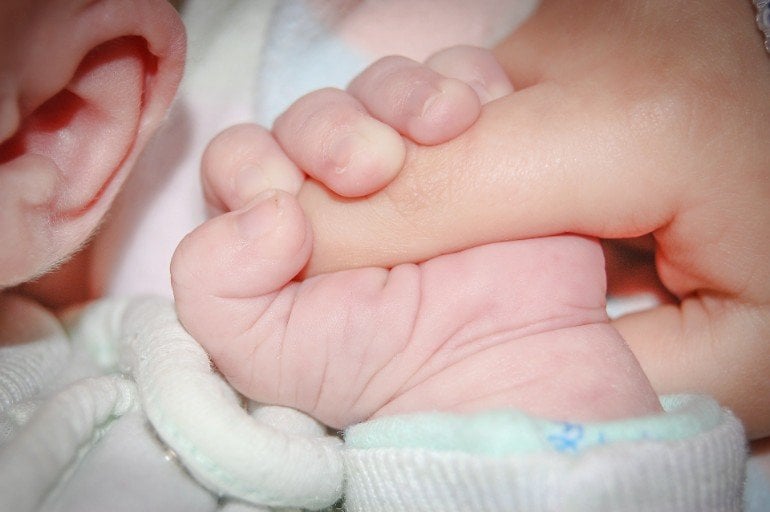Summary: Researchers report the ABR hearing test given to newborns to detect auditory problems could be adapted to identify infants at risk of autism spectrum disorder.
Source: University of Miami
For years, researchers have known through numerous studies that hearing and other sensory systems of adults and children who have autism differ from children or adults without autism.
Now, University of Miami and Harvard Medical School researchers who explored responses to the standard hearing test administered to millions of newborns around the world, are closing in on a way to detect early indicators of autism—perhaps as early as at birth.
Published in the journal Autism Research, the findings could inform additional research and pave the way for evaluations that can better identify newborns with elevated autism risk by using standard hearing tests. The researchers note that such tests are already regularly and widely used to screen newborns for hearing loss. The tests work by measuring auditory brainstem response (ABR), which gauges how well a baby’s inner ear and brain respond to sound.
“We’re not at the point just yet where we’re telling clinicians to use ABR testing as a determinant for autism in babies,” said study co-author Elizabeth Simpson, an associate professor in the College of Arts and Sciences’ Department of Psychology, whose research focuses on understanding infant social cognitive development. “But we are saying that this study presents a promising direction in how ABR testing can be used as a method for precise autism detection at birth.”
“The importance for diagnosing autism early during infant and child development, when interventions can have the most impact, cannot be overstated,” said the study’s lead author Oren Miron, a research associate in the Department of Biomedical Informatics at Harvard Medical School. “Any additional tool that could clarify diagnostic clues would be invaluable in that regard.”
For the study, researchers analyzed large datasets of Florida infants who were screened for hearing impairments with ABR tests. Usually conducted in hospital maternity wards, the tests make computer recordings of the auditory nerve activity of babies who are exposed to sounds transmitted by electrodes placed on their scalps. The test sound is very mild and can be performed while the infants sleep.
The research team analyzed nearly 140,000 auditory recordings from babies born in Florida and matched the data with records from the Florida Department of Education indicating children with developmental disabilities. Ultimately, they found that newborns who were later diagnosed with autism had slower brain responses to sounds during their ABR tests.

“Within the dataset we used from the Department of Education records of children who had autism, we saw how many we could match up from the ABR test screenings,” Simpson said. “We located 321 children who had ABR test screenings taken when they were newborns and who were later diagnosed with autism by preschool age.”
With additional investigation, researchers hope to add additional layers to the ABR screenings so that doctors can use them not only to better understand a newborn’s hearing and risk for autism, but potentially other developmental problems—like speech, language impairment, and Sudden Infant Death Syndrome—that could arise later.
“We know autism spectrum disorder is connected to how children process sound, so even if the child’s hearing is normal, it can still be processed differently,” Simpson added. “With better understanding of how ABR testing can be used to identify at-risk babies, we can flag children who might be at risk.”
Note to readers:
The researchers are recruiting participants in Miami-Dade County for a research study to further investigate the ability of ABR to identify increased risk for autism and other developmental disabilities. If you have a child (with or without autism) who is 1 to 5 years old and are interested in participating, contact [email protected] or 305-284-5520.
About this Autism research news
Source: University of Miami
Contact: Deserae E. del Campo – University of Miami
Image: The image is in the public domain
Original Research: Open access.
“Prolonged Auditory Brainstem Response in Universal Hearing Screening of Newborns with Autism Spectrum Disorder” by . Autism Research
Abstract
Prolonged Auditory Brainstem Response in Universal Hearing Screening of Newborns with Autism Spectrum Disorder
Previous studies report prolonged auditory brainstem response (ABR) in children and adults with autism spectrum disorder (ASD). Despite its promise as a biomarker, it is unclear whether healthy newborns who later develop ASD also show ABR abnormalities. In the current study, we extracted ABR data on 139,154 newborns from their Universal Newborn Hearing Screening, including 321 newborns who were later diagnosed with ASD. We found that the ASD newborns had significant prolongations of their ABR phase and V‐negative latency compared with the non‐ASD newborns. Newborns in the ASD group also exhibited greater variance in their latencies compared to previous studies in older ASD samples, likely due in part to the low intensity of the ABR stimulus. These findings suggest that newborns display neurophysiological variation associated with ASD at birth. Future studies with higher‐intensity stimulus ABRs may allow more accurate predictions of ASD risk, which could augment the universal ABR test that currently screens millions of newborns worldwide.






